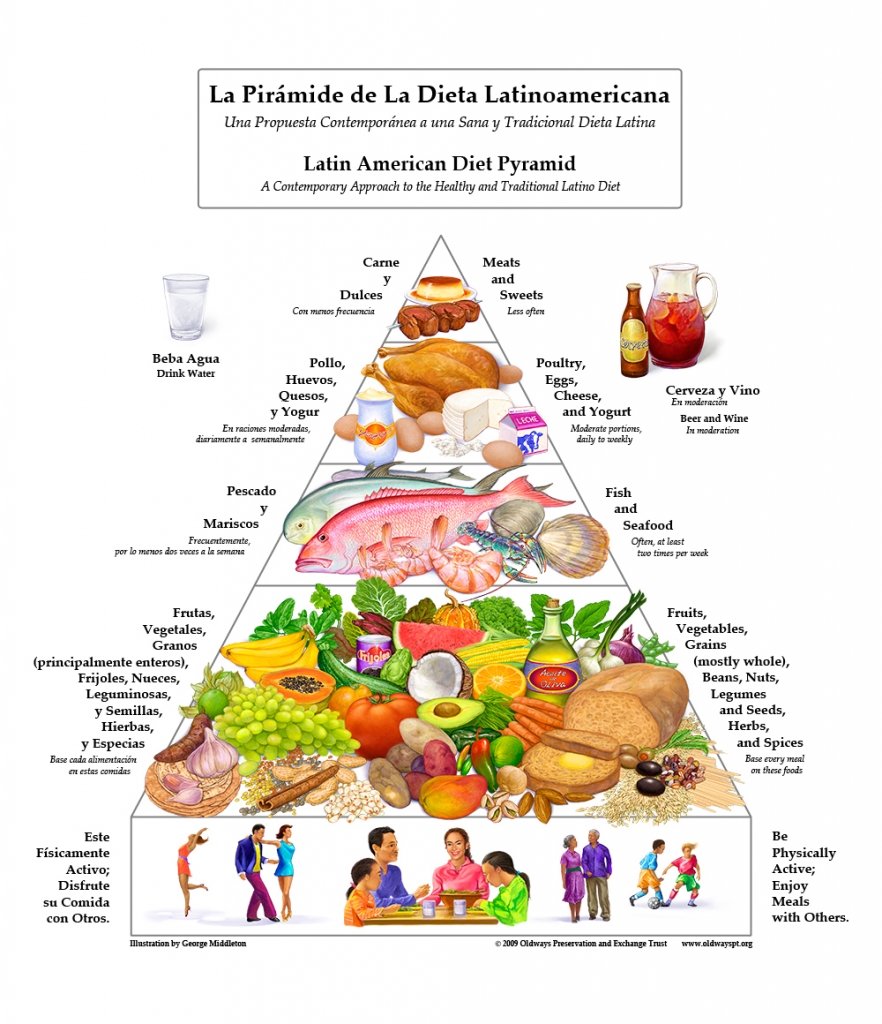Hispanic Children and Obesity Risk
Hispanic Children In U.S. At Greater Risk For Obesity Than Other Ethnic/Racial Groups
The prevalence of overweight in the US population is among the highest in Mexican-American children and adolescents. In a study of 1,030 Hispanic children between the ages of 4 and 19, published in the June 2009 issue of the Journal of the American Dietetic Association, researchers from the Baylor College of Medicine found less than optimal diets in both overweight and non-overweight participants.
Hispanic Children and Obesity Risk
According to the National Health and Nutrition Examination Surveys (NHANES), in 2005-2006 the prevalence of overweight among children (2-19 years) from all ethnic/racial groups was 15.5%. For Mexican-American males and females (2-19 years) the prevalence was 23.2% and 18.5%, respectively. Although the US environment encourages a sedentary lifestyle and excess food intake, the Hispanic population is burdened with additional risk factors for childhood obesity including parental obesity, low socioeconomic status (SES), recent immigration, acculturation to US diet and lifestyle, and limited health insurance coverage.
The VIVA LA FAMILIA Study was designed to identify genetic and environmental factors contributing to childhood obesity in the Hispanic population. It provided the novel opportunity to assess the diet of a large cohort of Hispanic children from low-SES families at high risk for obesity (1,030 children from 319 families in Houston, Texas). On average, 91% of parents were overweight or obese and parental income and education levels were low. Food insecurity was reported by 49% of households.
Writing in the article, Nancy F. Butte, PhD, Professor, USDA/ARS Children’s Nutrition Research Center, Department of Pediatrics, Baylor College of Medicine, states, “The diets of these low-SES Hispanic children were adequate in most essential nutrients, but suboptimal for the promotion of long-term health. Diet quality did not satisfy US dietary guidelines for fat, cholesterol, saturated fatty acids, fiber, added sugar, and sodium. Although energy intake was higher in overweight children, food sources, diet quality, and macro- and micronutrient composition were similar between non-overweight and overweight siblings…Knowledge of the dietary intake of children from low-SES Hispanic families at high risk for obesity will provide a basis on which to build nutritional interventions and policy that are appropriately tailored to population sub-groups.”
In a commentary published in the same issue of the Journal of the American Dietetic Association, Rafael Pérez-Escamilla, PhD, Professor of Nutritional Sciences & Public Health, Director, NIH EXPORT Center for Eliminating, Health Disparities among Latinos (CEHDL), University of Connecticut, Storrs, asks whether the process of acculturation into “mainstream” US society is having negative effects on Hispanics. Citing numerous studies, he explores many of the factors that both support and contradict the assimilation argument, and concludes that while acculturation is likely a negative influence, further study is warranted. He writes, “However, we still need to elucidate the mechanisms and the extent to which acculturation to the USA ‘mainstream’ culture per se explain deterioration in dietary quality, and increased risks for obesity and associated chronic diseases among Latinos. Filling in this gap in knowledge is essential for developing culturally appropriate and behavioral change based interventions targeting Latinos with different levels of acculturation.”
The article is “Nutrient adequacy and diet quality in non-overweight and overweight Hispanic children of low socioeconomic status – the VIVA LA FAMILIA Study” by Theresa A. Wilson, MS, RD, Anne L. Adolph, BS, and Nancy F. Butte, PhD. The commentary is “Dietary quality among Latinos: Is acculturation making us sick?” by Rafael Pérez-Escamilla, PhD. Both appear in the Journal of the American Dietetic Association, Volume 109, Issue 6 (June 2009) published by Elsevier.
Source: APA – Elsevier (2009, June 4). Hispanic Children In U.S. At Greater Risk For Obesity Than Other Ethnic/Racial Groups. ScienceDaily. Retrieved





